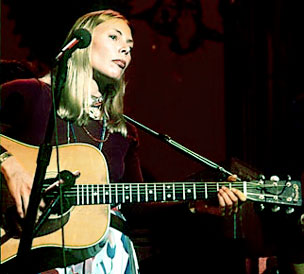|
MELODY, PITCH, SCALE and DYNAMICS
| MELODY |
 |
|
 |
Melody
is a succession of musical pitches played or sung to a certain
rhythm. A melody can also be thought of as the direction and
shape of a musical "line" given by a pattern of
pitches. Most melodies are derived from scales and melodies
are considered the most expressive element in music, (rhythm
the most physical). This is perhaps due to the fact that the
first instrument was the human voice and there as many varieties
of melodies as there are human emotions. Melodies are what
we sing and remember. A melodic line can move from high to
low or low to middle in range. A melody is a series of musical
musical pitches in time or time defined by sound. The direction
and shape of the melody is given by the pattern of pitches.
Melodies seem to climb (ascend) or fall (descend). Repeated
notes in a melody give the feeling of waiting for what is
going to come out of the music. Low descending notes act as
a set back and sequenced notes (repeated notes in different
registers) give the feeling of forward motion. The three basic
types of melodies are, tunes, motives and through composed
melodies.

| TUNE |
 |
|
 |
A
tune is a very special kind of melody. It is easy to sing,
easy to remember, catchy and written with clearly defined
phrases. Many folk songs are tunes and many classical melodies
have tuneful themes. Besides tunes having memorable and singable
aspects to them they also contain a clear sense of beginning,
middle and end. Some notable tunes in music are: "The
Star-Spangled Banner," "Happy Birthday to You,"
and many Christmas Carols. Tuneful melodies in the Classical
literature include the opening to Mozart's Symphony No. 40,
Tchaikovsky's Violin Concerto, and Beethoven's "Ode to
Joy" theme.
Right
click to download!
| MOTIVE |
 |
|
 |
A
short melodi fragment (just 2 or 3 notes). Just long enough
so that its rhythm and melodic character is easily recognized
and easily remembered when it comes back again. A brief succession
of pitches out of which a melody grows by repetition, sequence
and transformation. With a single pitch you have an atom.
When you add few more pitches a motive is formed and together
you have a melody. If you add enough motives together you
have a more complete melody. Some notably motivic melodies
include the theme to Beethoven's 5th Symphony which consists
of da da da DA. That motive is played twice in sequence. Other
motivic melodies are found in many of the works of Antonio
Vivaldi including the opening movement to his "Four Seasons.
| THROUGH
COMPOSED MELODY |
 |
|
 |
A
through composed melody is a melody that continues to develop
as you hear it. The melody can go in any direction that it
wants without regard to what came before or what will come
after. A through composed melody is hard to remember because
it continually unfolds as it is long and seemingly unending.
New music is heard for every new phrase. Much of improvisation
is through composed and so is ancient chant.
| PHRASE |
 |
|
 |
A
short musical unit or section of a melody. A complete melodic
idea comparable to a sentence in prose. Phrases are recognizable
because they end with a momentary or final sense of repose
or pause. The end of phrases are where singers and wind players
take a breath. The end of phrases for instrumentalists is
a moment to relax the playing hands and also a place to breath.
Music written and or performed without clear phrasing
is like running a stop sign. If the same music is phrased
differently it can come out sounding entirely different. Exact
passages in music differently phrased can be correct and
musical but carry a different meaning. The grammatical
equivalent to phrasing in music can be seen below.
 "I'm
sorry you can't come with us." "I'm
sorry you can't come with us."
Means
something quiet different than:
"I'm sorry. You can't come with us."
 Private! No swimming allowed!
Private! No swimming allowed!
Means
something quiet different than:
Private? No. Swimming allowed.
 What do you think?
My name is Fink. I sell clothes for nothing. What do you think?
My name is Fink. I sell clothes for nothing.
Means something quiet different than:
What do you think? My name is Fink. I sell clothes
for nothing?
| THEME |
 |
|
 |
The
most important melody in a piece of music is called the theme.
The theme of a piece makes up the principal melodic material.
Theme is a general term for the basic subject matter in a
piece of music. Fast pieces have short themes. Slow pieces
tend to have longer themes. Themes are most often melodies
but they can be harmony, rhythm and sometimes even be timbre
which is the characteristic quality of sound.
This
is an example of how the song "This Old Man" can
be varied with each repeat. Notice as the theme gets repeated;
each time a new set of lyrics is added to develop the theme
but never change it.
This
old man, he played one, He played knick-knack on my drum,
etc.
This
old man, he played two, He played knick-knack on my shoe,
etc.
This
old man, he played three, He played knick-knack on my knee,
etc.
This
old man, he played four, He played knick-knack on my door,
etc.
This
old man, he played five, He played knick-knack on my hive,
etc.
| DYNAMICS |
 |
|
 |
The
volume levels of music are called dynamics. They are the relative
loudness and softness of music. Most composers specify exactly
how loud or soft they want the music performed but performers
will obey the composers intentions and sometimes their interpretation
leads them to disobey the dynamics by adding their own volume
levels to the performance. The two big letters used when indicating
dynamics are p and f. They stand for "soft" and
"loud." in Italian. Either one of these letters
can be modified with an m placed in front of it, which means
"medium."
Music
dynamics are indicated in Italian. From soft to loud they
are as follows:
 |
 |
Pianissimo
= very soft (pp) |
 |
|
Piano
= soft (p) |
 |
|
Mezzo
Piano = medium soft (mp) |
 |
|
Mezzo
Forte = medium loud (mf) |
 |
|
Forte
= loud (f) |
 |
|
Fortissimo
= very loud (ff) |
 |
|
Crescendo
= gradually getting louder (<) |
 |
|
Decrescendo
= gradually getting softer (>) (diminuendo) |
| SCALE |
 |
|
 |
In
music a scale is a pattern of pitches rising and falling on
the degrees of the staff of which melodies and harmonies can
be made. Scales divide an octave up into smaller intervals.
The first note of a scale is called the tonic. The tonic is
heard as the strongest note, forms the key and the note all
other notes focus around. The two most commonly used scales in Western music are called
major and minor. Because of the size and arrangement of the
intervals in major or minor scales they have very different
characteristics of spirit and mood and the music that uses
them can sound very different in expression. Major can be
bright and cheerful whereas minor can be dark, serious and
sometimes be the more romantic scale. But there are many exceptions
to this rule. Pieces such as the Largo from Dvorák
“New World Symphony” is a beautiful melancholy melody
written with the major scale. The happy melody of Greensleeves
is actually written with a minor scale.
 |
 |
Minor
|
|
 |
 |
Major |
| |
|
Minor
means "lesser" or "smaller," as
opposed to Major, meaning "greater" or "larger,"
A minor scale contains smaller intervals than a major
scale. The minor scale has a smaller third and a smaller
sixth than a major scale.
|
 |
|
|
Major
means "greater" or "larger," as
opposed to Minor, meaning "lesser" or "smaller."
A major scale contains larger intervals than a minor scale.
The major scale has a greater third and a greater sixth
than a minor scale. |
| PITCH |
 |
|
 |

The
highness and lowness of sound is determined by the speed of
vibration a moving object makes. The pitch of an instrument
or voice is determined by how many times per second it's music
making object (reed, string or whatever) vibrates back and
forth. The faster the vibration the higher the pitch. The
slower the vibration the lower the pitch. The human ear has
a normal hearing range of between 16 and 20,000 vibrations
per second. Some high fidelity systems have a range above
the ability to hear by the human ear, but the upper harmonic
tones enrich the fundamental tones that do lie within the
ears range. Animals can hear tones above the normal human
range of hearing. Certain dog whistles are pitched in this
high area so that they can be heard by a dog but not by a
human being. Some high instruments (fast vibrations) are the
flute and piccolo. Some low instruments (slow vibrations)
are the cello and bassoon. Human voices are categorized as
follows:
|


